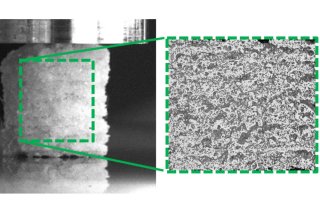
Project
Mechanical properties of 3D printed food: from process to final product
To enable food customization, in-depth knowledge of the relation between the 3D printing process and the mechanical behavior of the printed food is essential.
Project goal
In this project, the aim is on understanding and predicting the multiscale mechanical behavior of Selective Laser Sintered (SLS) food. Without changing the composition of the food powder, but making use of varying process parameters, customization of the mechanical properties of the product should be enabled.
Research approach
Careful experimental characterization reveals the time-dependent mechanical behavior and failure of the product. These characteristics are modeled in a constitutive framework that allows for predicting the large deformation response.
This constitutive model forms the basis of the project and is extended to include the effect of process parameters and to take the dependence on the loading direction into account.
Mechanical properties are very well-defined objective measures that intrinsically capture the mechanics of the product. Texture properties, on the other hand, are subjective measures that describe the mouthfeel while consuming a food product. In order to bridge the gap, an imitative test to have an objective measure of these texture properties, the so-called Texture Profile Analysis test, is analyzed. Quantities as hardness, springiness and cohesiveness are directly linked to mechanical properties as Young’s modulus, yield stress and fracture properties.
Outlook
By relating the mechanical properties to the process-parameters, it is possible to create different mechanical properties locally within a product. These mechanical properties directly influence the texture properties. The developed modeling framework is therefore an invaluable tool in food design. The next step is therefore to use this tool to create new food products with a specifically designed texture.
Publications
- Experimental characterization and modeling of the mechanical behavior of brittle 3D printed food - N. Jonkers, J.A.W. van Dommelen, M.G.D. Geers (2020)
